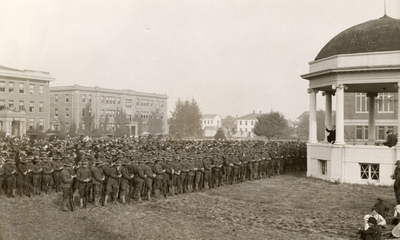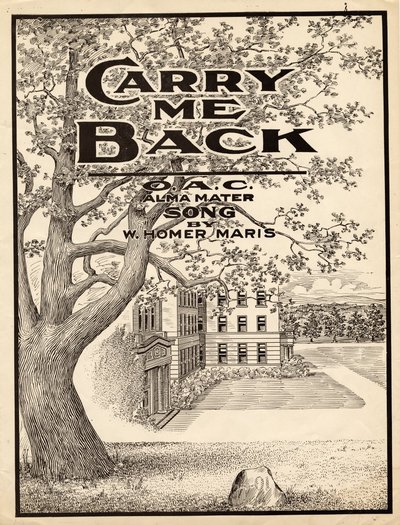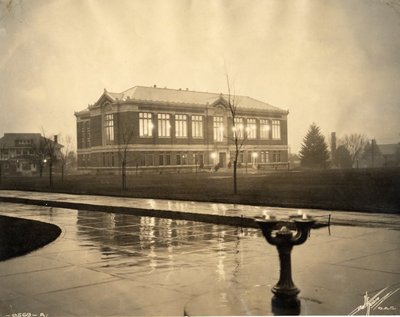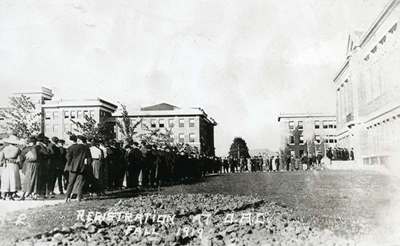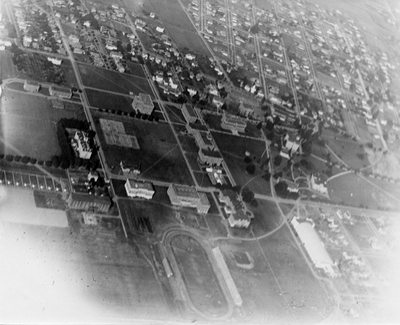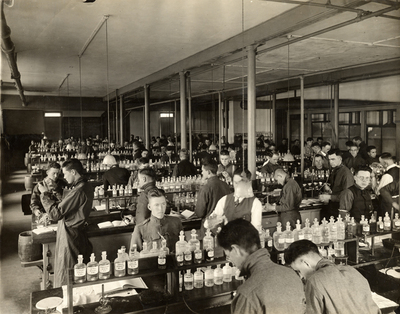1915-1919
1915
Volume 10 of the annual yearbook titled the Beaver for the first time.
Oregon Agricultural College became a charter member of the Pacific Coast (Athletic) Conference.
Men's Gymnasium (currently Langton Hall) erected.
Panhellenic and Interfraternity Council established.
The O.A.C. Alumnus, the first alumni magazine, began publication in October. It was a predecessor to the Oregon Stater.
1916
A seed certification program was established by the Extension Service. OAC agronomist George Hyslop created the program. Wheat was the first seed crop certified by the program.
Student health service organized.
Introduction of intramural athletics; A.D. Browne, director. (In the 1930s, the Intramural Athletic Department was recognized as one of the most outstanding in the nation.)
1917
Reserve Officers' Training Corps (ROTC) established; replaced the Cadet Corps. OAC designated as a "Distinguished Institution" for its ROTC work.
Alma Mater, titled "Carry Me Back," written by W. Homer Maris, M.S., Class of 1918. It was officially adopted in 1919.
School of Pharmacy (Adolph Ziefle, Dean; 1917-1945) established.
First home management house, Withycombe House, opened.
Forestry Building (currently Moreland Hall) completed in September.
Future two-time Nobel Prize winner Linus Pauling entered OAC on October 6.
During 1917-1918, Oregon Agricultural College was the center of military life for the entire state of Oregon. 66 faculty left to aid in the war effort.
1918
School of Vocational Education (Edwin D. Ressler, Dean; 1918-1927) established.
Division of Service Departments (E. J. Kraus, Dean; 1918-1919) established.
In its 50th year after designation as a state college: enrollment--1,668; degrees conferred--181; teaching and research staff--160; library collection--36,478 volumes.
The United States War Service called an additional 105 staff members to active service. (Nearly 2,000 students, alumni, and faculty members were enlisted. In addition, more than 2,000 men were in training at OAC in the Students' Army Training Corps and other military and naval training units).
Library Building (now Kidder Hall) completed in September.
1919
Early in the year, the second floor of Shepard Hall was used as a quarantine infirmary for students and townspeople affected by the influenza pandemic.
Three-term calendar restored.
Gold Star Memorial Service held on June 9, which honored the 51 OAC faculty, students and alumni who lost their lives in World War I. They were represented by gold stars on the service flags that had been presented to OAC by the students.
Horticultural Products Program (currently the Food Science and Technology Department), first in the United States, established.
Horticultural Products Building (now Hovland Hall) erected.


